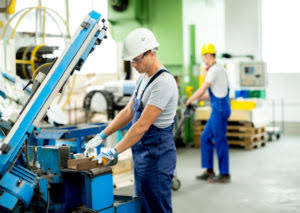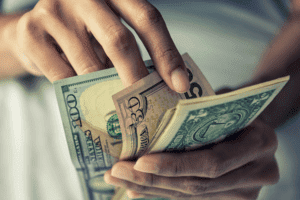What Is Property, Plant, And Equipment Pp&e?
Content

Tony’s favorite memories of his childhood were the times he spent with his dad at camp. Tony was daydreaming of those days a bit as he and Suzie jogged along a nature trail and came across a wonderful piece of property for sale.
It is important to note that regardless of the reason why a company has sold some of its property, plant, or equipment, it’s likely the company didn’t realize a profit from the sale. Companies can also borrow off their PP&E, , meaning the equipment can be used as collateral for a loan. (PP&E) are also called fixed or tangible assets, meaning they are physical items that a company cannot easily liquidate. The best way to manage your assets is to use an accounting software application that simplifies the entire asset management process from the initial acquisition to asset disposal. Improvements could include replacing light fixtures or purchasing an additional soda machine for a restaurant, while improvements in another company may include checking the land for piping issues or clearing out an empty lot for later use.
Calculating Property, Plant, And Equipment Pp&e
Yokogawa’s professional consultants can provide suitable suggestions for improvement from both business and production perspectives. If you study international accounting, you will find that other countries deal with these issues in a very different way than in the US. There is an international movement to standardize accounting and reporting, particularly for global companies. These are assets any business needs to carryout its daily activities effectively.

… Depreciation merely reduces the value of plant asset accounts, it does not reduce the cash account or affect cash flows. DETERMINING DEPRECIATION. Factors that determine depreciation expense are the initial cost, the residual value and the useful life. Assets receive different accounting treatment depending on type.
Accounting Articles
Plant assets are stated at actual or estimated cost at date of acquisition. Construction is capitalized as expended and reflected in net investment in plant. Physical property acquired by the University by purchase, gift, trade, or fabrication and which take the form of land, buildings, equipment, improvements to land or buildings, and other tangible items are capitalized. This feature also provides an essential environment for consulting services related to production optimization.
$recsi Rec Silicon (osebx) pushing for the re-birth of US polysilicon #solar #semiconductors #batteries – assets of USD 2 billion not reflected in current share price – plant set to re-open #fintwit #stockstowatch
— Håvard Holen (@havhol) February 7, 2022
Property, plant, and equipment (PP&E) are long-term assets vital to business operations. Property, plant, and equipmentare tangible assets, meaning they are physical in nature or can be touched; as a result, they are not easily converted into cash. The overall value of a company’s PP&E can range from very low to extremely high compared to its total assets. Since these assets produce benefits for more than one year, they arecapitalizedand reported on thebalance sheetas a long-term asset. This means when a piece of equipment is purchased an expense isn’t immediately recorded. Instead, the cost of the asset is allocated over itsuseful life. Typically in business accounting, an entry appears as a cost when it is manufactured and then disappears when it is sold.
The process of apportionment of the cost of a tangible asset over the period it is useful for and also used to account for decrease in value is depreciation. The organizations when reporting financial results, in most cases, lists the value of net property, plant & equipment on their balance sheet so the calculation has been already considered. In the balance sheet of a company, the accumulated depreciation and plant assets are recorded on the assets side under property plant and equipment, as part of non-current asset. Also, for any impairment losses, the plant assets are reviewed as per the rules of accounting. The company can make the journal entry for gain on exchange of plant assets by debiting the plant assets and the accumulated depreciation account and crediting the gain on disposal of plant assets, plant assets , and cash account.
What Are Plant Assets? Definition And Examples
This is a necessity for most businesses, especially those who operate entirely in-house and do not require a third party for manufacturing or processing. Though not all businesses operate on-site or own land, many benefit from the purchase of land, even if it does not involve using the land until a later date. Start-up companies might purchase land for one location, while a larger business may own various forms of land that serve different purposes for the company and its entities. DepreciationDefined — Depreciation is the systematic and rational allocation of the historical cost of an asset, less its salvage value, over its estimated useful life. Depreciation is an allocation process as opposed to a valuation process.
- Depreciation is the process of allocating the cost of a tangible asset over its useful life and is used to account for declines in value.
- Plant assets are depreciated over their useful lives and each year’s depreciation is credited to a contra asset account Accumulated Depreciation.
- However, it’s not only these physical items that you can touch.
- Notwithstanding Property, Plant & Equipment are assets which are long-term or non-current assets, all the non-current assets are not just property, plant, and equipment.
- Capital expenditures are funds used by a company to acquire or upgrade physical assets such as property, buildings, or equipment.
Preservation/Restoration – Maintaining special assets in, or returning them to a level of quality as close to the original as possible. Betterment, Renewal, Replacement – The overhaul or replacement of major constituent parts that have deteriorated because of the elements or usage. The deterioration has not been corrected through ongoing or required maintenance. An example would be replacement of old or broken windows with a new thermal variety. Alterations – A change in the internal arrangement or other physical characteristics of an existing asset so that it may be effectively used for a newly designated purpose.
Types Of Plant Assets
Cutting our taxes, that’s something most of us can relate to. The cost of training the entire company’s personnel when a new computer system is installed would probably be a material amount, especially in a large company. Every employee might require a day’s training or more in the new system. The loss of productivity would be a material amount, and should be classified as part of the depreciable cost of the asset.
According to an accounting source Wiley, Plant assets are resources with three key main characteristics. They have a definite shape, secondly all plant assets have physical appearance and depreciate except for land. Main types of plant assets in the world, namely include Land, Equipment, Property and Building. The name plant assets comes from the industrial revolution era where factories and plants were one of the most common businesses.
The cost of training may be considered part of the depreciable cost, it the amount is material to the purchase of the asset. A brief training session for one or two machine operators will probably be an immaterial amount. Depreciation expense spreads the cost of major equipment and assets over a period of time that spans a number of years. Prepare entries for cash and lump-sum purchases of property, plant and equipment. Equipment, machinery, buildings, and vehicles are all types of PP&E assets. Even the smallest business has assets, which can include everything from cash in the bank, to the computer you’re working on, to the building where you manufacture piggy banks. The company ABC’s agent has determined that the old equipment has a fair value of $25,000 at the time of exchange.
Management should keep an eye on the condition of plant assets. Under U.S. generally accepted accounting principles, assets must be held at the lower of cost or market value. That means companies should regularly check for damage or obsolesce that could lower the asset’s market value.

This type of cost is included in the depreciable cost of the asset. Depreciation refers to the cost allocation of an asset to expense through its useful life. Sum Of Years Digit MethodThe sum of years digits method is an accelerated depreciation method whereby the method declines the asset’s value at an accelerated rate. Therefore, greater deductions are allowed in the starting life of the assets than in subsequent years. Also known as the fixed installment method, this model suggests putting an equal charge for depreciation in each of the accounting periods. Depreciation is the wear and tear of the asset, which occurs due to its daily usage.
Purchase Of Existing Buildings
A capitalized cost is an expense that is added to the cost basis of a fixed asset on a company’s balance sheet. Tom’s Machine Shop is a factory that machines fine art printing presses. One of the CNC machines broke down and Tom purchases a new machine for $100,000. The bookkeeper would record the transaction by debiting the plant assets account for $100,000 and crediting the cash account for the same.
NMP: Do India’s infra biggies want those assets? – Deccan Herald
NMP: Do India’s infra biggies want those assets?.
Posted: Tue, 18 Jan 2022 08:00:00 GMT [source]
However, it’s not only these physical items that you can touch. Let’s say that you have an agreement to rent a location but as part of the lease agreement, you can make improvements as you see fit to carry out your business, an arrangement called a leasehold improvement agreement. Unless the lease expires , you get to count those improvements towards your plant assets as well. This lesson explores plant assets, including their definition and accounting issues that companies encounter when dealing with them. Understand what a plant asset is, browse some examples, and learn how to account for plant assets in business. Applicant Tracking Choosing the best applicant tracking system is crucial to having a smooth recruitment process that saves you time and money.
Record the note payable on January 1, 2020, and the first two payments on January 31, 2020, and February 28, 2020. Discounts taken on cost of capital asset purchases are recognized as a reduction of the cost of the assets acquired. The lease transfers ownership of the property to the lessee by the end of the lease term. If at the end of the lease, the lessee owns the property, the lessee in effect has bought property that needs to be recorded on their books at the inception of the lease.
What these assets all have in common, that also differentiates them from current assets, is that they are not going to turn into cash any time soon and their connection to revenue is indirect. With inventory, we saw a direct match between the cost of the product and the sales revenue. When that asset sold and generated revenue, we moved the cost of the asset to cost of goods sold and recorded the cost against the revenue in one of the most perfect examples of matching we’ve seen so far. Rent, insurance, and wages are examples of period costs that we match to revenues by posting them to the income statement accounts in the same period as the revenue, using time as our method of matching.
Land
Plant assets depreciate hence due to that they can not live forever. This is a more reason companies estimated accumulated depreciation from the time of purchase and depreciation expense to know cost of maintaining the asset per year. Theoretically the more an assets is used, the it becomes an expense and wears out. Fixed AssetFixed assets are assets that are held for the long term and are not expected to be converted into cash in a short period of time.
- The types of plant costs are expensed include maintenance, preservation/restoration, and project costs below the capitalization threshold.
- Each type of plant asset has a specific use, but they are generally aimed at facilitating the company’s operations.
- The most immediate option to reduce the risk of stranded assets and lost investments is to fully account for stranding risks now.
- Alternatives Looking for a different set of features or lower price point?
- It is also important that the asset be used as it is intended, and for the production of income.
- Equipment items which are permanently attached to and are an integral part of any building, such as exhaust fans, transformers, cranes, ventilation systems, etc., are not capitalized in the “Equipment” account, but rather in the “Buildings” account.
They are referred as “Fixed Assets” or “Property, Plant, and Equipment”. As per cost principle, they are set down at their cost (purchase price plus any cost incurred to acquire and making it functional. Tangible assets are physical and measurable assets that are used in a company’s operations. Assets like property, plant, and equipment, are tangible assets. plant assets Since these assets produce benefits for more than one year, they are capitalized and reported on the balance sheet as a long-term asset. Gifts of land, buildings, and/or equipment – gifts of items that would normally be capitalized if purchased or constructed by the University should be capitalized at the fair market value at the time of the gift.







